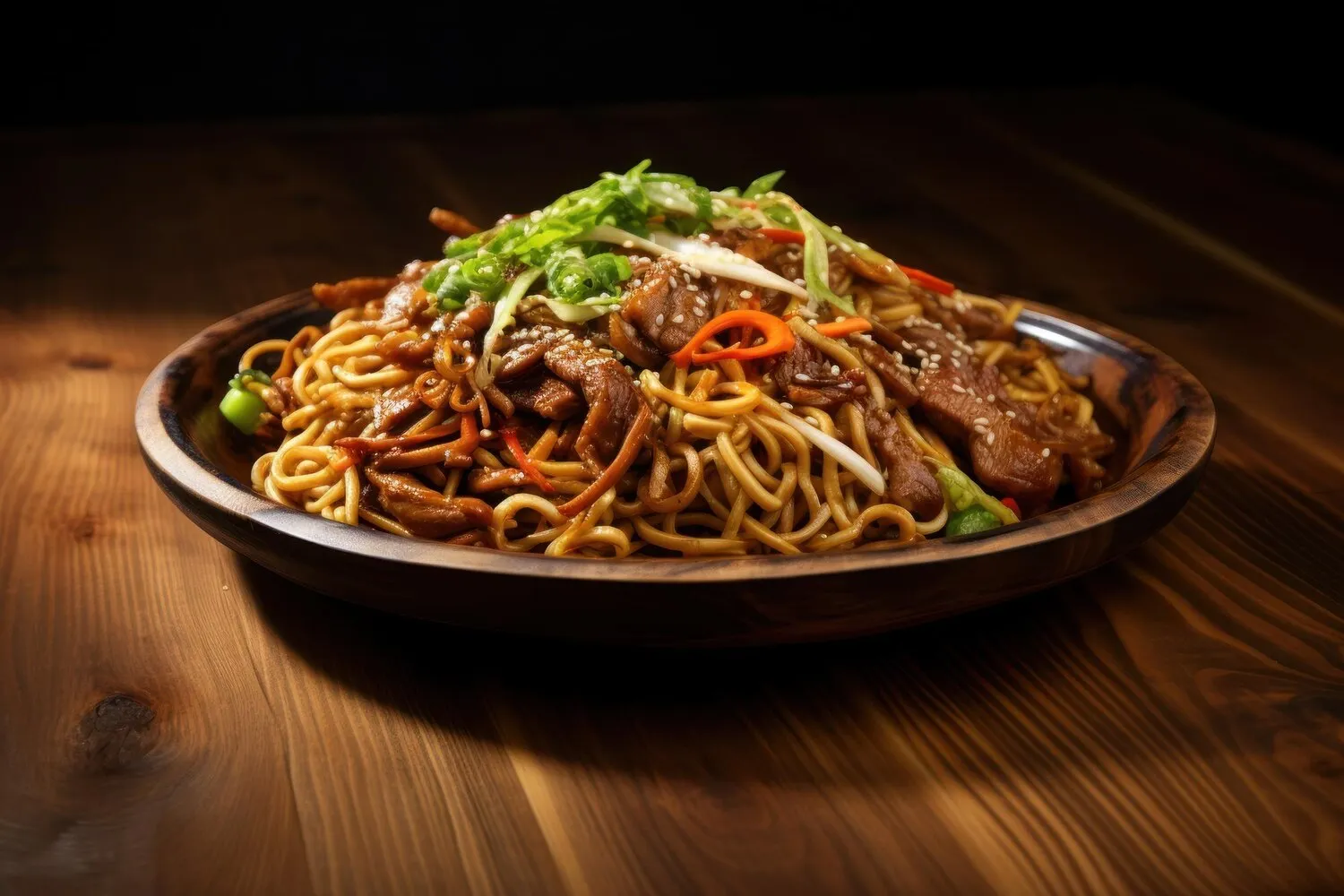
Yakisoba
Stir-fried noodles with vegetables and meat.
Nutrition Facts
* The % Daily Value (DV) tells you how much a nutrient in a serving of food contributes to a daily diet. 2,000 calories a day is used for general nutrition advice.
Yakisoba, meaning 'fried noodles,' emerged in Japan during the early 20th century, likely influenced by Chinese chow mein. It gained popularity as a street food and festival staple, becoming a widely accessible and customizable dish.
Yakisoba holds a significant place in Japanese popular culture as a beloved street food, festival food, and everyday meal.
Street Food Staple
Yakisoba is a quintessential street food, readily available at food stalls during festivals (matsuri) and events throughout Japan.
Home Cooking Favorite
Due to its simplicity and versatility, yakisoba is frequently prepared at home, allowing for endless variations based on available ingredients and personal preferences.
Pan-Regional Variations
Regional variations exist, with different areas showcasing unique ingredients and sauces, reflecting local culinary traditions.
Yakisoba-pan
Yakisoba-pan is a popular snack/meal where Yakisoba noodles are served in a hot dog style bun. It's a popular item in convenient stores and bakeries throughout Japan
Yakisoba is characterized by its savory and slightly sweet flavors, achieved through a combination of soy sauce-based sauce, vegetables, and protein.
The savory base comes primarily from the yakisoba sauce, typically containing soy sauce, Worcestershire sauce, oyster sauce, ketchup, and other ingredients like brown sugar or honey for sweetness. Common additions include thinly sliced pork, cabbage, carrots, onions, and bean sprouts. Garnishes like aonori (dried seaweed flakes), beni shoga (pickled ginger), and katsuobushi (bonito flakes) further enhance the umami and textural complexity.
Noodle Preparation
Use fresh or pre-cooked yakisoba noodles. If using dried noodles, follow package instructions carefully to avoid overcooking and mushiness. Stir-frying the noodles directly from the package will also prevent them from becoming mushy
Sauce Consistency
Adjust the yakisoba sauce to your liking, balancing the sweetness and savoriness. Consider adding a touch of dashi (Japanese soup stock) for added depth of flavor.
High Heat
Cook the yakisoba over high heat in a wok or large frying pan to achieve a slight char and prevent the vegetables from becoming soggy.
Don't overcrowd the pan
Cook ingredients in batches to prevent the pan from cooling down, which can result in soggy noodles and vegetables.
Explore additional Noodle Dish dishes and restaurants
Explore Noodle DishDiscover top dining spots and culinary experiences in Macaé.
Explore MacaéLearn more about the food culture, restaurant scene, and culinary heritage of Brazil.
Explore Brazil